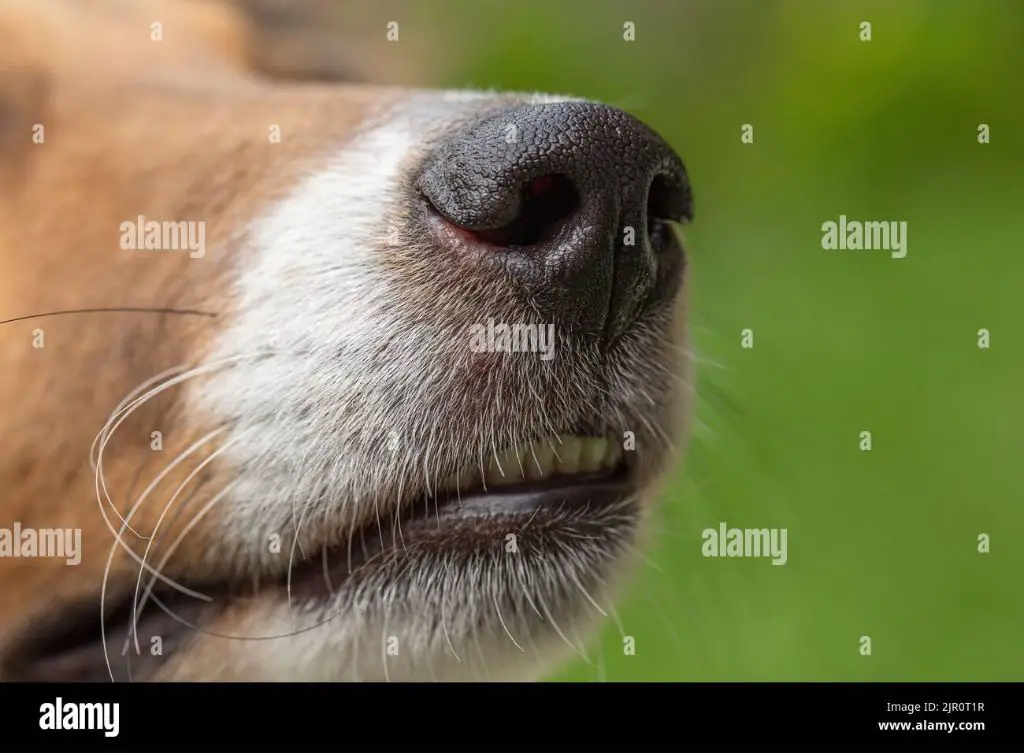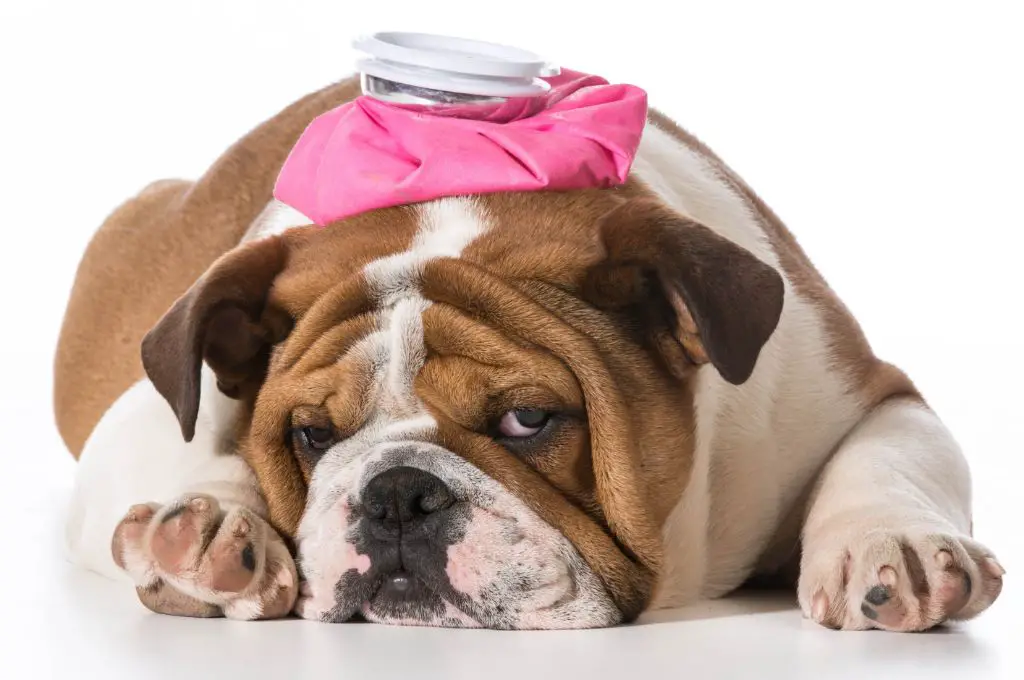Introduction
Whiskers, also known as vibrissae, are specialized hairs that grow above a dog’s eyes, on their muzzle, cheeks, and chin. Unlike regular dog fur, whiskers serve important sensory purposes for a dog. They function similarly to human fingertips, helping dogs gather information about their surroundings through touch.
Whiskers are highly sensitive tactile hairs that detect subtle vibrations and air currents, providing dogs with environmental feedback even when vision is impaired. This “sixth sense” helps dogs navigate spaces, locate objects, and gauge distances in close proximity to their face and body.
Overall, whiskers play a key role in spatial awareness, environmental scanning, and sensory perception for dogs. They help dogs safely explore the world around them using touch.
What Are Whiskers?

Whiskers, also known as vibrissae, are long, thick hairs that grow around the muzzle, jaws, and above the eyes of many mammals. They typically grow in patterns on each side of a mammal’s face. Whiskers are more than just fur – they are actually highly sensitive, specialized tactile hairs.
Each whisker grows out of a follicle that is loaded with nerve endings. This makes them incredibly sensitive to even the slightest touch or change in air currents. The structure of whiskers resembles antennae more than regular fur. Most whiskers are wider at the base and taper to a fine point at the end.
Whiskers come in a variety of shapes, lengths, thickness, and colors depending on the mammal species. For example, cats have long, thick whiskers while mice have very fine, short whiskers. But their purpose remains the same across mammals – to sense the surroundings.
Whisker Functions
A dog’s whiskers, also known as vibrissae, serve important sensory functions. They help dogs detect objects in their immediate environment and navigate spaces safely without running into things. According to VCA Animal Hospitals, whiskers “act like antennas” constantly sending information to a dog’s brain about the surroundings.
The vibrissae contain touch-sensitive nerve endings that detect subtle changes in air currents when something is near the face. This helps dogs determine if an object is close, even in low light when it may not be visible. As a dog moves, the whiskers bend and provide feedback about the size, shape, and texture of objects, allowing the dog to gauge distances and avoid colliding with obstacles.
Overall, whiskers give dogs a kind of “sixth sense” about their immediate environment. They provide sensory input that helps dogs safely navigate spaces and detect the presence, location, and dimensions of nearby items. This important sensory function helps prevent injuries and allows dogs to move confidently.
Whisker Loss
Dogs can lose their whiskers for a variety of reasons. While some whisker loss is normal as part of the natural shedding process, excessive loss can signal an underlying health issue.
Common causes of whisker loss in dogs include:
- Alopecia areata – An autoimmune disease that causes hair loss on the body, face, and head, including whiskers (WebMD).
- Folliculitis – Inflammation of the hair follicles caused by bacterial infection (DogTime).
- Mites – Microscopic parasites like demodectic mange that infect the skin and hair follicles (ForThePaws).
- Trauma – Injuries, burns, or friction that damage the whisker follicles (ForThePaws).
- Medications – Certain drugs like chemotherapy that affect hair growth (DogTime).
If whisker loss seems excessive or only affects one side, it’s a good idea to have your vet examine your dog.

Does It Hurt?
There is some debate around whether whisker loss actually causes dogs pain. The whiskers themselves don’t contain nerves, however the follicles where the whiskers grow from do. So if a whisker falls out naturally on its own, similar to shedding fur, it does not hurt the dog. However, if a whisker is forcefully pulled out, it can be painful since the nerves in the follicle are being stimulated.
According to WebMD, “While cutting whiskers isn’t painful — the whiskers’ follicles contain nerves, not the whiskers themselves — it can cause confusion and discomfort for dogs.”
So while plucking a whisker does not necessarily “hurt” in the traditional sense, it does cause discomfort, likely due to the stimulation of the nerves in the follicle. This discomfort may cause dogs to act anxious, shake their head, paw at their face, or try to avoid having their whiskers touched.
Overall, while whisker loss itself may not be extremely painful, dogs can experience discomfort, especially if the whiskers are removed forcefully rather than naturally shedding. To avoid causing distress, whiskers should never be cut or plucked.
Sources:
https://www.webmd.com/pets/dogs/what-to-know-dogs-whiskers
Signs of Discomfort
Dogs rely on their whiskers for spatial awareness and sensory information, so losing whiskers can cause discomfort and behavior changes. According to Wagwalking, signs of whisker pain in dogs include:
- Pulling away or pawing at their face when you touch the area
- Bleeding at the follicles
- Yelping when the whiskers are touched
- Hiding their face and not wanting to be touched
WebMD explains that whiskers are highly innervated, so pulling them out can be very painful and cause bleeding. If your dog is suddenly acting withdrawn, pawing at its face, or seems irritated when you touch its muzzle, it could be experiencing whisker discomfort.
Monitoring your dog’s behavior is key to identifying whisker pain. Changes like hiding, reluctance to play or eat, and reacting negatively to touches could signal their whiskers are hurting.
Preventing Whisker Loss
While whisker loss is a natural process that cannot be completely prevented, there are some steps you can take to minimize excessive shedding:
Provide a nutritious diet – A diet rich in Omega fatty acids can help keep your dog’s coat, including whiskers, healthy. Salmon, sardines, flaxseed oil are good options (Source).
Supplement with vitamins – Supplements with biotin, vitamin E and zinc can help reduce shedding. Consult your vet on appropriate dosages for your dog (Source).
Groom regularly – Regular brushing distributes oils along the hair shaft, keeping the coat moisturized. Use a soft slicker brush and avoid pulling on whiskers.
Avoid stress – Stress can increase shedding. Keep your dog’s routine consistent and minimize stressful events.
Check for skin issues – Allergies, infections and parasites can cause excess shedding. Have your vet examine your dog if shedding seems excessive.
Managing Discomfort
If your dog seems to be in pain or discomfort after losing whiskers, there are a few things you can do to help ease any soreness:

-
Apply a warm compress to the area for 5-10 minutes a few times a day. This can reduce inflammation and provide soothing relief.
-
Massage the area gently with your fingers to increase blood flow and relax the skin and muscles.
-
Give your dog pain medication such as pet-safe ibuprofen to reduce discomfort, but check with your vet on proper dosage.
-
Limit exposure to direct sunlight which could further irritate tender skin.
-
Try a hydrocortisone cream to ease itching or inflammation. Check with your vet first.
-
Use a soft cone/cone collar to stop your dog from scratching or irritating the area while it heals.
With some simple at-home care, you can help your dog feel better as their whiskers grow back. If pain persists or seems severe, take them to the vet for an exam.
When to See a Vet
Most of the time, losing a few whiskers is harmless. However, you should take your dog to the veterinarian if whiskers are falling out in large clumps, fall out on just one side of your dog’s face, or your dog seems bothered or in pain from losing whiskers.
According to veterinarian Jason Nicholas, you should make a veterinary appointment if your dog loses more than 8-10 whiskers within a couple days. Rapid whisker loss could potentially signal an underlying medical issue like an autoimmune disease, skin infection, or thyroid problems. [1]

See your vet promptly if your dog is showing other concerning symptoms along with whisker loss like lethargy, appetite changes, hair loss, skin irritation, or head shaking. Your vet can examine your dog and run tests to determine if an illness is causing the whisker loss.
Conclusion
Whiskers play a critical role for dogs. They are used for essential functions like navigation, sensing objects, and communication. Losing whiskers can temporarily limit these abilities and cause issues like clumsiness and reduced appetite. Signs of discomfort like head shaking and paw licking may indicate whisker regrowth. While whisker loss rarely requires veterinary assistance, preventing trauma through grooming precautions and providing a comfortable environment will help minimize discomfort during regrowth. Within several weeks, new whiskers will likely return and restore normal whisker functions for your dog.